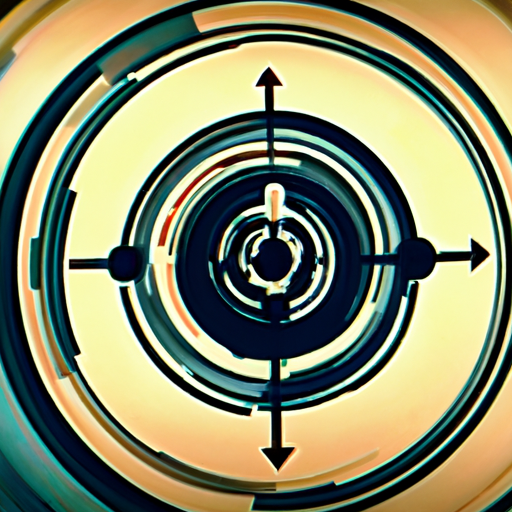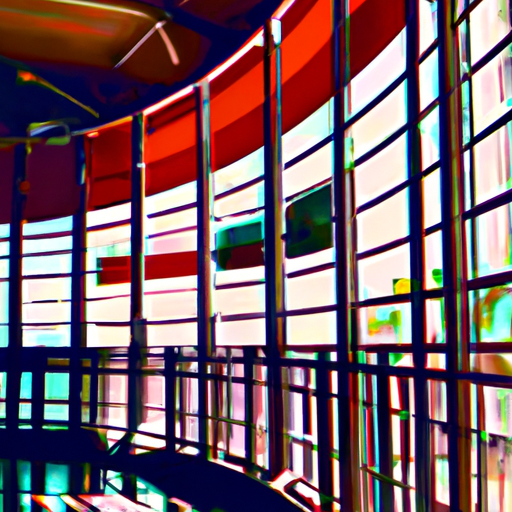
-
Table of Contents
- Futuristic Illustration: Imagining Tomorrow’s World
- The History of Futuristic Illustration
- Techniques and Styles in Futuristic Illustration
- 1. Retro-Futurism
- 2. Cyberpunk
- 3. Biopunk
- The Impact of Futuristic Illustration
- 1. Inspiring Innovation
- 2. Shaping Popular Culture
- 3. Promoting Critical Thinking
- Case Studies: Futuristic Illustration in Action
- 1. “The Jetsons” – A Vision of the Future
- 2. SpaceX – Visualizing Space Exploration
- Conclusion
Futuristic Illustration: Imagining Tomorrow’s World

As technology continues to advance at an unprecedented pace, the possibilities for the future seem limitless. One way that artists and designers have been exploring these possibilities is through futuristic illustration. By creating visual representations of tomorrow’s world, these artists not only inspire and captivate audiences but also provide valuable insights into the potential future of our society. In this article, we will delve into the world of futuristic illustration, exploring its history, techniques, and impact on our collective imagination.
The History of Futuristic Illustration
Futuristic illustration has a rich history that dates back to the early 20th century. During this time, artists and writers began to imagine what the future might look like, inspired by the rapid advancements in technology and the changing social landscape. One of the most influential figures in this movement was Jules Verne, whose novels such as “Twenty Thousand Leagues Under the Sea” and “From the Earth to the Moon” depicted fantastical inventions and adventures.
Another significant milestone in the history of futuristic illustration was the World’s Fair, which showcased futuristic visions of technology and design. These exhibitions, held in various cities around the world, allowed artists and designers to present their ideas to a wide audience and sparked the public’s imagination about the possibilities of the future.
With the advent of science fiction literature and films in the mid-20th century, futuristic illustration gained even more popularity. Artists like Syd Mead, known for his work on movies such as “Blade Runner” and “Tron,” brought futuristic worlds to life through their illustrations, influencing a generation of artists and designers.
Techniques and Styles in Futuristic Illustration
Futuristic illustration encompasses a wide range of techniques and styles, each with its own unique characteristics. Here are some of the most prominent techniques and styles used in this genre:
1. Retro-Futurism
Retro-futurism is a style that combines elements of the past with futuristic concepts. It often draws inspiration from the aesthetics of the mid-20th century, creating a nostalgic and whimsical vision of the future. An example of retro-futurism is the artwork of French artist Jean-Marc Côté, who created a series of illustrations in the late 19th century depicting what life might be like in the year 2000.
2. Cyberpunk
Cyberpunk is a subgenre of science fiction that emerged in the 1980s. It is characterized by a dystopian vision of the future, where advanced technology coexists with a decaying society. Cyberpunk illustrations often feature dark and gritty cityscapes, neon lights, and cybernetically enhanced characters. The work of Japanese artist Masamune Shirow, known for his manga series “Ghost in the Shell,” exemplifies the cyberpunk style.
3. Biopunk
Biopunk is a relatively new subgenre of science fiction that explores the implications of biotechnology and genetic engineering. Biopunk illustrations often depict a future where biological organisms are manipulated and modified, blurring the boundaries between nature and technology. The artwork of British artist James Gurney, known for his book “Dinotopia,” showcases a biopunk-inspired world where humans coexist with genetically engineered creatures.
The Impact of Futuristic Illustration
Futuristic illustration has a profound impact on our collective imagination and the way we perceive the future. Here are some of the ways in which it influences our society:
1. Inspiring Innovation
Futuristic illustrations inspire and stimulate innovation by showcasing new possibilities and pushing the boundaries of what is considered possible. By visualizing future technologies and environments, these illustrations provide a starting point for scientists, engineers, and designers to explore and develop new ideas.
2. Shaping Popular Culture
Futuristic illustration has a significant influence on popular culture, particularly in the realms of science fiction literature, films, and video games. Many iconic science fiction franchises, such as “Star Wars” and “The Matrix,” have been heavily influenced by the visual aesthetics of futuristic illustration. These illustrations help create immersive and believable worlds that captivate audiences and leave a lasting impact.
3. Promoting Critical Thinking
Futuristic illustration encourages critical thinking by prompting us to question the potential consequences of technological advancements and societal changes. By visualizing possible futures, these illustrations allow us to explore the ethical, social, and environmental implications of our actions today. They serve as a reminder that the choices we make now can shape the world of tomorrow.
Case Studies: Futuristic Illustration in Action
Let’s take a closer look at two case studies that demonstrate the power and impact of futuristic illustration:
1. “The Jetsons” – A Vision of the Future
“The Jetsons,” an animated television series that aired in the 1960s, presented a utopian vision of the future. The show’s futuristic illustrations depicted flying cars, robot maids, and automated homes, capturing the imagination of viewers and inspiring generations to dream about the possibilities of technology. While many of the show’s predictions have not yet become a reality, it continues to serve as a cultural touchstone for futuristic visions.
2. SpaceX – Visualizing Space Exploration
SpaceX, the aerospace manufacturer founded by Elon Musk, has been using futuristic illustrations to communicate its vision of space exploration. Through detailed illustrations and animations, SpaceX showcases its plans for colonizing Mars, building reusable rockets, and revolutionizing space travel. These illustrations not only generate excitement and support for the company’s mission but also inspire a new generation of space enthusiasts.
Conclusion
Futuristic illustration is a powerful tool for imagining and exploring tomorrow’s world. By combining artistry, imagination, and technological insights, artists and designers create visual representations that inspire, captivate, and inform. From retro-futurism to cyberpunk and biopunk, the various styles and techniques in futuristic illustration offer a glimpse into the possibilities and challenges that lie ahead. As we continue to navigate an increasingly complex and uncertain future, these illustrations serve as a reminder of the importance of imagination, innovation, and critical thinking in shaping the world of tomorrow.
